How Tele-ICU Reduces Cost in ICU
 As most of us know, Telemedicine has transformed the dynamics of critical care delivery since the 1960s. It was primarily developed to support military and space programs that demanded remote clinical services to patients, including and especially during the Vietnam conflict where instant decision making was needed, albeit remotely. According to the American Telemedicine Association (ATA), “Formally defined, telemedicine is the use of medical information exchanged from one site to another via electronic communications to improve a patient’s clinical health status.” However, the digital transformation in healthcare has augmented the scope of telemedicine from primary healthcare to critical care in recent years.
As most of us know, Telemedicine has transformed the dynamics of critical care delivery since the 1960s. It was primarily developed to support military and space programs that demanded remote clinical services to patients, including and especially during the Vietnam conflict where instant decision making was needed, albeit remotely. According to the American Telemedicine Association (ATA), “Formally defined, telemedicine is the use of medical information exchanged from one site to another via electronic communications to improve a patient’s clinical health status.” However, the digital transformation in healthcare has augmented the scope of telemedicine from primary healthcare to critical care in recent years.
A research study states that about 6 million patients are being treated in the Intensive Care Units (ICUs) each year in the United States. The aging population and increasing incidence of chronic diseases will result in a growing demand for sustainable and advanced critical care solutions. The technological advancements in the field of telemedicine such as Tele-ICU can ease the workload of critical care intensivists and nurses in ICUs while improving the Return on Investment (ROI) for hospitals in the long term.
Clinical Decision Support
In Intensive Care Units (ICUs), intensivists and their care teams must be prepared to respond promptly and judiciously at any moment and save lives. The critical care physicians need to arrive at more accurate clinical decisions within a few minutes to ensure better healthcare outcomes for ICU patients at risk. Consequently, ICU Physician Staffing (IPS) has a huge impact on the mortality rate and Average Length of Stay (ALOS) among the ICU patients according to LeapFrog Group’s survey results. A Tele-ICU system delivers clinical decision support resulting in better patient care with a higher probability of a faster recovery. It captures continuous stream of patient data that enables evidence-based approach to critical care. For instance, Intercept Telehealth leverages Smart Alerts® technology to help critical care physicians in systematic assessment and analysis of clinical data and improve care plans. It promotes patient-specific critical care support and minimizes the overall operational costs of critical care delivery in hospitals.
Resource Management
Intensivists are the lifeline of an Intensive Care Unit (ICU) in hospitals. They must be available round the clock to monitor and make critical decisions on treatment in the event of deteriorating vital signs of an ICU patient. A research study reports that only about 10-15% of the hospitals across the country employ full-time intensivists. On the downside, intensivists experience burn out more often than their colleagues while their work-life balance gets affected due to stress and irregular work hours. Tele-ICU is a comprehensive and competitive telemedicine solution that enhances the productivity and efficiency of intensivists resulting in better patient care. It helps hospitals optimize their existing resources rather than acquire additional resources. Likewise, Intercept Telehealth supports off-site intensivist staffing, leading to reduced ICU care costs and higher returns for hospitals. It equips one intensivist and 3 critical care nurses to provide care for about 150 ICU beds simultaneously across multiple locations.
Patient-centered Technology
The patient experience is evolving owing to patient-centered technologies like Tele-ICU. It is the “second set of eyes” that offers additional clinical surveillance and critical care support through remote monitoring and real-time alerting capabilities. A dashboard-style user interface supports data visualization and population management for remote clinical team who provide proactive support to bedside clinicians across hospitals. It allows intensivists and care teams to provide cutting-edge critical care delivery, remotely. Adding to it, Intercept Telehealth’s IoT-enabled Smart Alerts engine alerts intensivists and critical care providers in ICUs when a patient’s vital signs deviate from a set of predefined criteria based on clinical evidence which varies according to the patient’s baseline and underlying condition in ICU.
Tele ICU proves to be a promising technology solution for critical care delivery beyond boundaries of time zones and geographical locations in the near future. Its off-site command center connects the critical care teams, including intensivists and critical care nurses with patients in distance intensive care units (ICUs) across hospitals. It facilitates two-way audio-video communication in real-time along with the exchange of health information, digitally.
Ultimately, the Tele-ICU model promotes the cost-effectiveness of critical care delivery as opposed to that of traditional models. It emphasizes on leveraging state-of-the-art technology by optimizing and augmenting existing infrastructure (EMR) and resources (care-provider staff) in hospitals to help save lives in a more efficient and effective manner.

